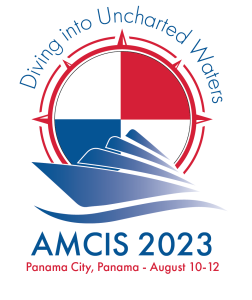Loading...
Paper Type
Complete
Description
"To improve learning in higher education, the primary focus should be on engaging students in a process that best enhances their learning--a process that includes feedback on the effectiveness of their learning efforts. " [Kolb & Kolb, 2005] If that is true of most subjects of higher education, it is doubly so for teaching programming in the college classroom. Learning programming and related topics requires experience and personal commitment. It requires effort, often prolonged effort, over time. Unfortunately, students (and business students in particular) regularly seek ways to minimize their investment of time and maximize their grade outcome. [Parks-Leduc, et. al., 2022] The only recourse for MIS/IS instructors is, then, to create graded programming assignments with a variety and quantity sufficient to coerce students into investing the time necessary for learning. However, grading student programs is a labor-intensive responsibility for faculty members. It is tedious and error prone. Grading programs consistently and in a timely manner is often a challenge for faculty members. Delays in graded feedback are detrimental to student learning. This paper presents an innovative tool called Grade-O-Matic. It can be used by both students and instructors to grade programs quickly and in large quantities. By using the Grade-O-Matic tool, faculty members can assign more graded programming assignments, and students can get immediate feedback on their work before turning it in to be graded. This paper describes the Grade-O-Matic tool, and its creation, from its inception to its current state using terminology of the Design Science Research Methodology (DSRM) [Peffers, et. al., 2007]. The distinctives of the tool, and how it is different from similar efforts, are noted. The paper concludes with anecdotal evidence to support the claim that the tool, and the immediacy it affords, supports student learning. Also noted are generalized principles that may support future efforts.
Paper Number
1267
Recommended Citation
Doyle, Mart and Shafer, Jeremy, "Grade-O-Matic: A Tool to Test and Grade Programs" (2023). AMCIS 2023 Proceedings. 7.
https://aisel.aisnet.org/amcis2023/sig_ed/sig_ed/7
Grade-O-Matic: A Tool to Test and Grade Programs
"To improve learning in higher education, the primary focus should be on engaging students in a process that best enhances their learning--a process that includes feedback on the effectiveness of their learning efforts. " [Kolb & Kolb, 2005] If that is true of most subjects of higher education, it is doubly so for teaching programming in the college classroom. Learning programming and related topics requires experience and personal commitment. It requires effort, often prolonged effort, over time. Unfortunately, students (and business students in particular) regularly seek ways to minimize their investment of time and maximize their grade outcome. [Parks-Leduc, et. al., 2022] The only recourse for MIS/IS instructors is, then, to create graded programming assignments with a variety and quantity sufficient to coerce students into investing the time necessary for learning. However, grading student programs is a labor-intensive responsibility for faculty members. It is tedious and error prone. Grading programs consistently and in a timely manner is often a challenge for faculty members. Delays in graded feedback are detrimental to student learning. This paper presents an innovative tool called Grade-O-Matic. It can be used by both students and instructors to grade programs quickly and in large quantities. By using the Grade-O-Matic tool, faculty members can assign more graded programming assignments, and students can get immediate feedback on their work before turning it in to be graded. This paper describes the Grade-O-Matic tool, and its creation, from its inception to its current state using terminology of the Design Science Research Methodology (DSRM) [Peffers, et. al., 2007]. The distinctives of the tool, and how it is different from similar efforts, are noted. The paper concludes with anecdotal evidence to support the claim that the tool, and the immediacy it affords, supports student learning. Also noted are generalized principles that may support future efforts.
When commenting on articles, please be friendly, welcoming, respectful and abide by the AIS eLibrary Discussion Thread Code of Conduct posted here.



Comments
SIG ED